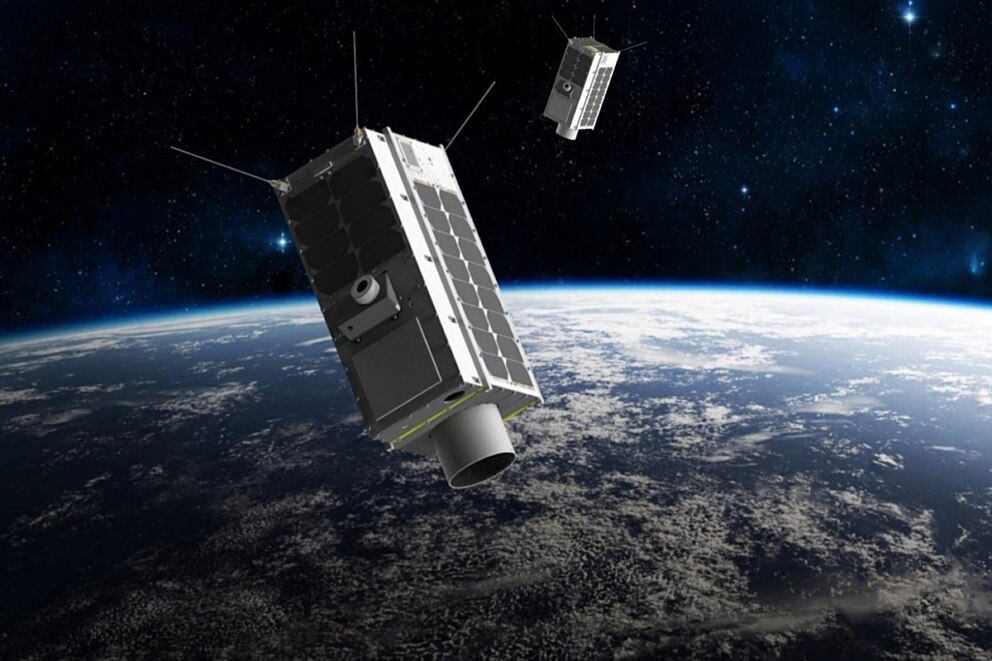
Methane-detection satellites can help slow down the effects of climate change. Companies can use the relevant data to fix leaks and prevent further methane emissions from escaping. (Image Credit: GHGSat)
Between 2016 and 2021, Southern California Gas Company received complaints from state regulators regarding methane leaks from its infrastructure. During that time, the state regulators partnered with NASA, deploying planes equipped with high-res remote sensors to find methane plumes from the agriculture, waste, and oil and gas industries. Days later, the gas company verified the issue, repairing pipelines afterward. It also replaced a compressor station’s valve to minimize methane leakage.
Carbon Mapper plans to launch those methane-detecting remote sensors into space aboard two satellites toward the end of 2023 for global –climate accountability. Nowadays, satellites can locate methane with AI determining how much methane escapes. This solution can help utilities quickly repair leaks while revealing any country or company underreporting methane emissions.
Climate change can be solved quicker by restricting methane. That’s because it lingers in the atmosphere for around a decade and possesses eighty times more warming power than carbon dioxide. It’s still quite difficult to detect dangerous methane levels, however. Costly field studies with aircraft and handheld infrared cameras detect the leaks we need to find.
Recently, Carbon Mapper announced it stopped 48,000 metric tons of methane from escaping from landfills, manure pits, oil, and gas. That number could significantly increase after flights report other companies taking action. Meanwhile, SoCalGas reduced methane emissions by 37% last year thanks to its venting gas decline along with aerial and ground-based monitoring.
Each year, airplanes map approximately two-thirds of SoCalGas’s pipelines. Satellites can detect any leaks that occur during those flights. Once these satellites are deployed, SoCalGas expects to continue working with Carbon Mapper to identify crucial and large methane leaks.
GHGSat, the Canadian emissions monitoring company, is also helping monitor methane emissions with its six satellites in orbit. It also plans to launch an additional four satellites by the end of 2023. Chevron, TotalEnergies, and Shell recruited GHGSat to limit and study sea methane leaks. In the past, GHGSat also detected “super-emitter” events from Russia’s largest coal mine, alerting operators of the incident. Next year, the Environmental Defense Fund plans to launch satellites. MethaneSAT captures the regions that host over 80% of the world’s oil and gas production.
The ESA is aiming to launch carbon dioxide monitoring satellites in space to help reduce emissions. Each satellite will be equipped with a near-infrared and shortwave-infrared spectrometer for carbon dioxide measurements.
Have a story tip? Message me at: http://twitter.com/Cabe_Atwell
